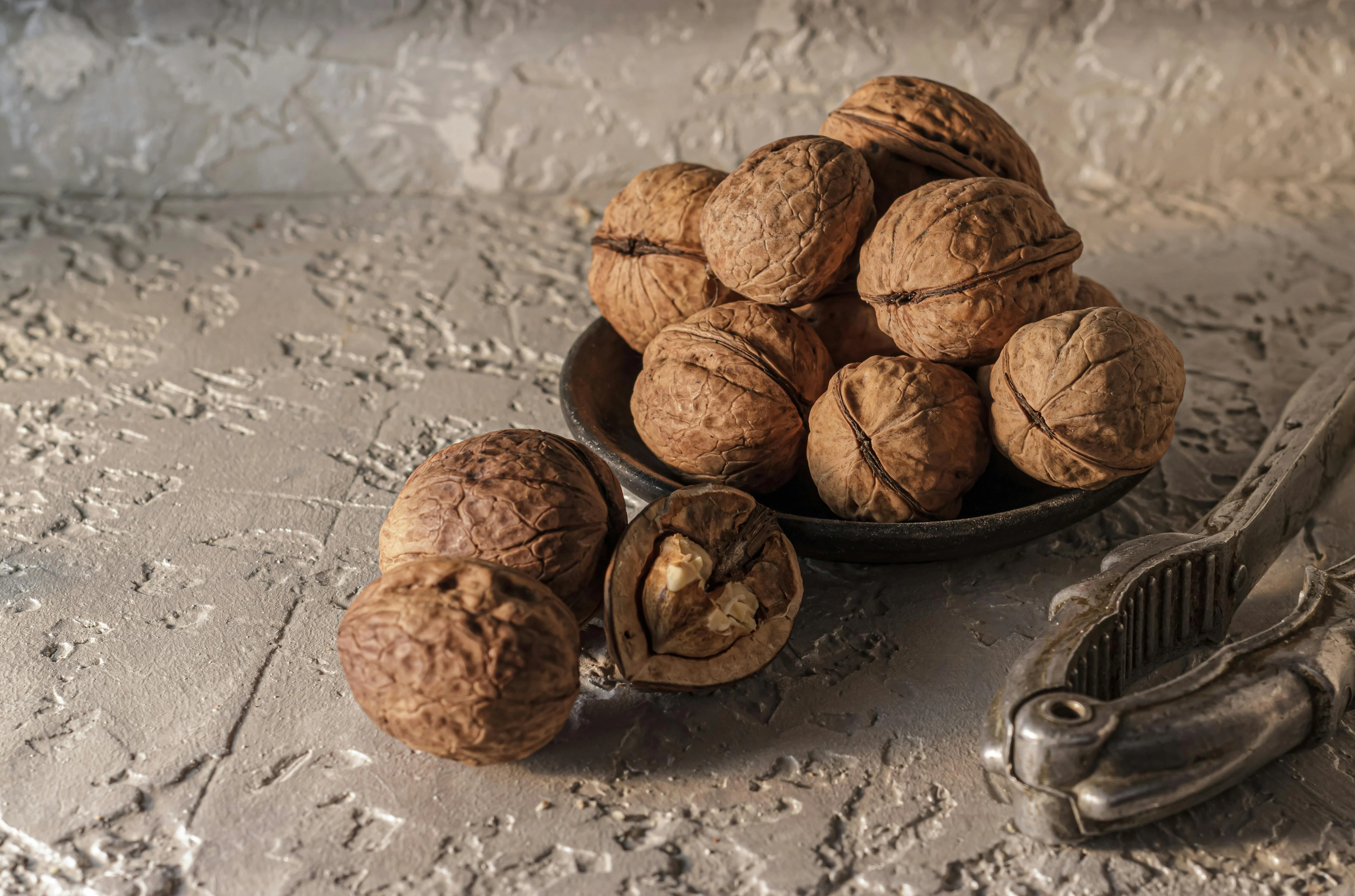
Raisins, dates, figs, and other dried fruits might not be as appealing as fresh fruits, but these little sweet bites can help you meet your goal of eating at least two servings of fruit a day.
One major benefit is their long shelf life, which means you won’t have to worry about them going bad. They’re also lightweight and make for easy snacks, especially when paired with nuts. A classic duo is raisins and peanuts, while dried apricots with almonds make another delicious combination.
Keep in mind that dried fruits are energy-dense and higher in calories, so it’s important not to overindulge— a serving size is just a quarter-cup. However, they also pack in a lot of nutrients along with those calories. Most dried fruits are excellent sources of potassium and fiber, and they’re rich in antioxidants, vitamins, and minerals. Just be aware that some dried fruits may have added sugar, so always check the label to avoid unnecessary empty calories.
Dried fruits are also great mixed into oatmeal, baked into muffins, or added to salads and grain-based dishes.
In case of an emergency, you need to have medicines, tools, health paperwork, and plans on hand.
If you live near the coast, you need to start getting ready for storms early. Storms can come on quickly, giving you little time to plan where to stay safe or what to bring with you in case you need to leave. In the chaos, people often forget essential health care items like medicines or medical gear.
Dr. Scott Goldberg, the medical director of emergency preparedness at Brigham and Women's Hospital and a longtime member of a FEMA task force that aids areas damaged by hurricanes, notes that people may bring their diabetes medication but forget to bring their blood sugar monitor or their hearing aids.
This storm season, learn what to expect and how to ensure that your health care kit is the most important item in it.
What will the storm season be like in 2024?
The hurricane predictions for this year make it even more important to start getting ready right away.
For the 2024 hurricane season, which runs until November 30, forecasters with the National Weather Service of the National Oceanic and Atmospheric Administration expect more storms than usual.
There could be 17 to 25 storms with winds of 39 mph or higher, including 8 to 13 hurricanes. Four to seven of these could be major hurricanes with winds of 111 mph or higher.
What types of plans should you create?
Preparing for the possibility of major storms is a significant task. Before the storm's fierce winds and heavy rains even start, you need to get hurricane supplies, figure out how to keep your home safe, and plan your escape route (especially if you live in a flood zone). For information on where to stay, call the disaster management office in your city or county.
For medical reasons, you may need help getting out of the area or at a shelter. Check to see if your county or city has a special needs list like this one in Florida. If you sign up, first responders will be able to call you when there are storms and take you to a special shelter with medical staff, hospital cots, and maybe even oxygen tanks.
What should you bring?
A shelter provides a secure location to endure a storm, complete with food, water, and restrooms, but you must carry all necessary items. It is essential to bring enough medical supplies and medical tools.
"It's easy to just grab the prescription drugs from your cabinet, but what if you only have enough for two days?" You might have to wait a while to get another one. "For every prescription, we suggest at least 14 or 30 days' worth," says Dr. Goldberg. "Talk to your doctor about the possibility of getting an extra refill to keep on standby for your go bag."
For many people, adopting a healthy diet often feels like a series of sacrifices: skipping appetizers, cutting back on carbs and saturated fats, or giving up desserts altogether. But what if there was something you enjoy that’s actually good for you? And no, I’m not referring to chocolate (which, in moderation, can be quite beneficial!).
This time, it's nuts that are getting attention. Previous studies have shown that higher nut consumption is linked to improved heart health and lower rates of cardiovascular disease. For instance, several trials have associated eating nuts with lower blood pressure and cholesterol levels. Plus, nuts are a key component of the Mediterranean diet, known for its heart-healthy benefits.
Health Benefits of Walnuts
A 2018 study highlights walnuts as an especially beneficial option. This isn’t the first time researchers have arrived at this conclusion. A prior analysis involving 365 participants across 13 trials found that diets rich in walnuts resulted in lower total and LDL ("bad") cholesterol compared to other diets. Since then, further studies with larger participant groups and longer follow-ups have been published.
The latest analysis reviewed data from 26 studies, involving over 1,000 participants. Those who included walnuts in their diet showed:
- Lower total cholesterol (about 7 mg/dL, or a 3% reduction)
- Lower LDL cholesterol (about 5.5 mg/dL, a 4% reduction)
- Lower triglycerides (around 4.7 mg/dL, a 5.5% reduction)
- Lower apoprotein B (a protein linked to heart disease) by nearly 4 mg/dL
Although these reductions in blood lipids were modest, larger improvements (like a 12 mg/dL decrease in total cholesterol) were noted when compared to a typical U.S. or Western diet, which tends to be high in red meats, fatty dairy, and sugary foods.
Many people worry that a diet high in fats, such as those from nuts, might lead to weight gain, but fortunately, participants on the walnut-rich diet did not experience any weight gain.
Moreover, newer studies have also pointed to the health benefits of walnuts, including improved blood lipids and potential brain health protection.
What Makes Walnuts So Healthy?
While the findings are intriguing, they raise the question of whether walnuts are uniquely beneficial. It could be the type of oils in walnuts that contribute to their cardiovascular advantages. Walnuts are rich in polyunsaturated fatty acids, which are healthier than saturated fats. They also contain alpha-linolenic and linoleic acids, which may have anti-inflammatory properties that promote healthy blood vessels and positively impact blood lipids.
It's important to note that not all nuts are created equal. Many nuts, such as almonds and cashews, are high in monounsaturated fats, along with polyunsaturated fats. While these are healthier fat options compared to saturated and trans fats, walnuts' unique combination of fats and polyunsaturated fatty acids may offer specific benefits for heart health.

St. Anthony's Roman Catholic Church
Address: Govan Rd., Govan, Glasgow G51
When you're visiting Glasgow, a must-see historical church is St. Anthony's Roman Catholic Church, located in the heart of Govan. This architectural masterpiece, designed by John Honeyman in 1877-8, combines intricate Byzantine and Romanesque styles, creating a stunning visual experience for anyone who steps through its doors.
The church’s exterior showcases beautiful red ashlar bands and coursed rubble, lending it a distinctive look. A striking round-headed doorway with delicate dogtooth molding greets you as you approach. Look up, and you’ll spot a magnificent rose window framed by blind arches, adding an element of grandeur. The square tower to the side, complete with its copper-topped pyramidal roof, stands as a prominent feature of the skyline, offering a snapshot of 19th-century architectural ingenuity.
As you step inside, the spacious nave with its wide wooden roof immediately draws your eye. The highlight, however, is the chancel, which boasts a semi-circular domed apse lined with colorful marble panels and intricate stencil decorations. The church also features striking stained glass windows that fill the space with soft light, including simpler designs on the side windows and more elaborate artistry in the chancel’s lancets. For organ lovers, the historic pipe organ, originally installed in 1952, adds an auditory layer to your experience, especially after its refurbishment in 1976.
For a peaceful visit, attend one of the regular Mass services, held every day of the week, with special Vigil Masses on Sundays. St. Anthony's Church isn’t just a place of worship—it’s a journey through Glasgow’s rich history, a living monument to Gothic and Byzantine design, all nestled in the vibrant neighborhood of Govan. Whether you're a history buff, an architecture enthusiast, or just looking for a quiet moment of reflection, St. Anthony’s is a hidden treasure that offers something for everyone.

Smartwatches and rings can track various health metrics, like physical activity, sleep, heart rate, and even your heart's electrical activity. However, the FDA cautions against using these devices to monitor blood sugar levels if they claim to do so without any skin penetration. The FDA has not evaluated the safety or effectiveness of these devices, and relying on them could lead to inaccurate blood sugar readings. This poses a significant risk for those with diabetes, who need to regularly check their blood sugar levels — typically through a finger prick test or a continuous glucose monitor (CGM) that uses tiny sensors that penetrate the skin and send data to a smartphone app. It's important to note that the FDA's warning pertains specifically to smart rings and watches that promise needle-free monitoring, not to CGMs. If you're concerned about the accuracy of your blood sugar monitor, it’s best to consult your doctor or pharmacist about whether it’s an FDA-approved, reliable device.
Which flavor of cake do you enjoy eating the most?
Reclaiming a better nighttime sleep can significantly enhance your health, but it requires patience and effort to adjust your habits. If you often find yourself awake until the early hours and sleeping in, or if you feel more creative and productive in the afternoon or evening, you may be a night owl—quite different from a morning lark, who rises with the sun and sleeps early.
For a long time, experts believed there weren't significant health differences between night owls and morning larks as long as you get the recommended seven to nine hours of sleep. However, new insights suggest it might be beneficial to reconsider your sleep patterns.
Risks of Being a Night Owl
Recent studies indicate that being a night owl can increase the likelihood of developing various health issues. For instance, research found that individuals who identified as night owls had a significantly higher risk of developing diabetes compared to those who are morning larks. Night owls also tend to have a higher chance of being overweight and may engage in unhealthy behaviors, such as excessive drinking, smoking, poor eating habits, and insufficient sleep. Even when accounting for these lifestyle factors, the risk of diabetes remained elevated among night owls.
Moreover, another study indicated that going to bed later than 10 p.m. is linked to a higher risk of obesity, particularly among those who sleep fewer hours compared to morning larks.
Consequences of Inadequate Sleep
Night owls typically experience less sleep than morning larks, adding to their health risks. Sleep is crucial for the brain to eliminate toxins and consolidate memories. Insufficient, low-quality sleep can lead to poor focus, increased risk of accidents, weakened immunity, and various diseases, including diabetes, heart disease, and depression.
Embracing Nighttime Sleep
Humans are naturally wired to sleep best during the dark hours. Getting quality sleep in the dark maximizes the restorative benefits of sleep. If you're a night owl and stay up late, you're likely not taking full advantage of this natural sleep cycle.
Strategies for Success
To successfully shift your sleep schedule, adopt good sleep hygiene practices:
- Exercise regularly but avoid intense workouts close to bedtime.
- Steer clear of alcohol and spicy foods in the evening.
- Establish a relaxing bedtime routine: dim the lights, turn off screens, and engage in calming activities like reading.
- Create a comfortable sleep environment: sleep in a cool, dark room with cozy bedding.
Why Whole-Grain Rice a healthier choice than white rice?
Whole-grain rice comes in various colors, including gold, purple, red, and black, but the most common type is brown. This refers to the natural color of the grain rather than a specific variety.
When rice is milled and polished to remove the bran and germ, only the starchy endosperm remains, resulting in white rice. Unfortunately, this refining process also removes important nutrients. In contrast to white rice, brown rice is richer in fiber, several B vitamins (B1, B3, B6, and B9), magnesium, potassium, and iron. Studies indicate that replacing white rice with brown rice may help improve blood sugar levels and assist with weight management.
You can find various types of brown rice at the store, including aromatic long-grain basmati rice (popular in Indian dishes) and jasmine rice (a favorite in Thai and other Southeast Asian cuisines). To cook brown rice, combine one cup of rice with about two cups of water (or low-sodium vegetable broth) in a saucepan with a lid. Bring it to a boil, then reduce the heat, cover, and let it simmer for 45 to 50 minutes. For convenience, consider cooking a large batch and freezing individual portions for up to several months.

According to a recent Japanese study that was written about in the January 2024 edition of JAMA Network Open, a smartphone-based mall walking program could inspire people to get more active.
The study examined step records from 217,344 mall patrons who carried a free smartphone step-tracking app. After walking 1,000 steps at the mall, participants received a digital coupon to participate in a lottery for shopping points.
Researchers collected daily step count data for the entirety of 2021. They discovered that on days when individuals engaged in the mall walking program, they averaged over 1,200 additional steps compared to days they didn’t participate. Notably, women and those aged 65 and older exhibited the most significant increases in their daily step counts.
The authors highlight that malls can be an excellent environment for walking, offering a spacious and safe area free from the complications of poor weather or heavy traffic.
This research is still being monitored.
Photo by Jonathan Borba from Pexels

Here’s what the latest research suggests. Intermittent fasting, which involves following a strict eating schedule to aid weight loss, is becoming increasingly popular. But does it really work?
Recent studies indicate that intermittent fasting might offer similar or even slightly better benefits for weight loss compared to traditional calorie-restriction diets. One of its key advantages is its simplicity, which can make it easier to stick to than other weight-loss plans.
While other diets focus on what foods to eat and how much, intermittent fasting centers on when to eat. It involves not eating for specific periods throughout the day. There are several methods, but one of the most common is the 16/8 approach. In this method, you eat during an eight-hour window (like from 10 a.m. to 6 p.m.) and fast for the next 16 hours (from 6 p.m. until 10 a.m. the following day). During the fasting hours, you can drink plain water, tea, or coffee, and it’s important to maintain healthy eating habits during your eating window.
Short-term studies show that people often find it easier to stick with intermittent fasting compared to low-carb diets. The 16/8 schedule can be simpler to follow since you’ll be sleeping for about half of the fasting period. This means you just skip late-night snacks and either delay or skip breakfast.
The State of Ketosis
So, how does intermittent fasting aid weight loss? Going for long periods without eating can push your body into a temporary state of ketosis, where it burns fat for energy. Ketosis occurs when your body runs low on glucose (its main energy source) and starts using stored fat instead. For some people, fasting for sixteen hours is enough time to begin producing ketones and enter ketosis.
Intermittent fasting is associated with several health benefits, including a reduction in cardiovascular disease risk factors such as obesity, high blood sugar, high blood pressure, and high cholesterol levels. Some research even suggests it may promote a healthier gut microbiome, improving digestion and offering protection against infections. Many who practice intermittent fasting report increased energy levels. However, the current evidence supporting these benefits is still limited, and the long-term effects remain unknown. Most studies have focused on smaller populations and only observed the effects over a few weeks to a year.







